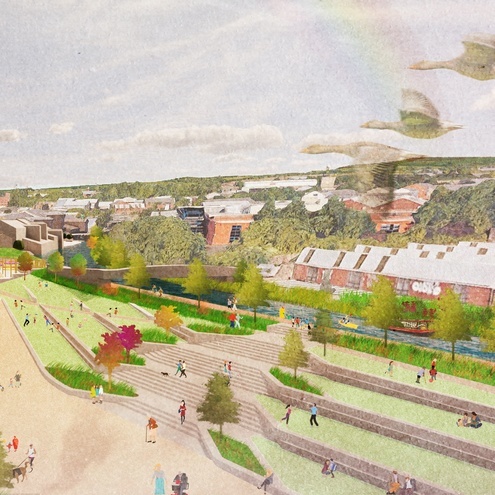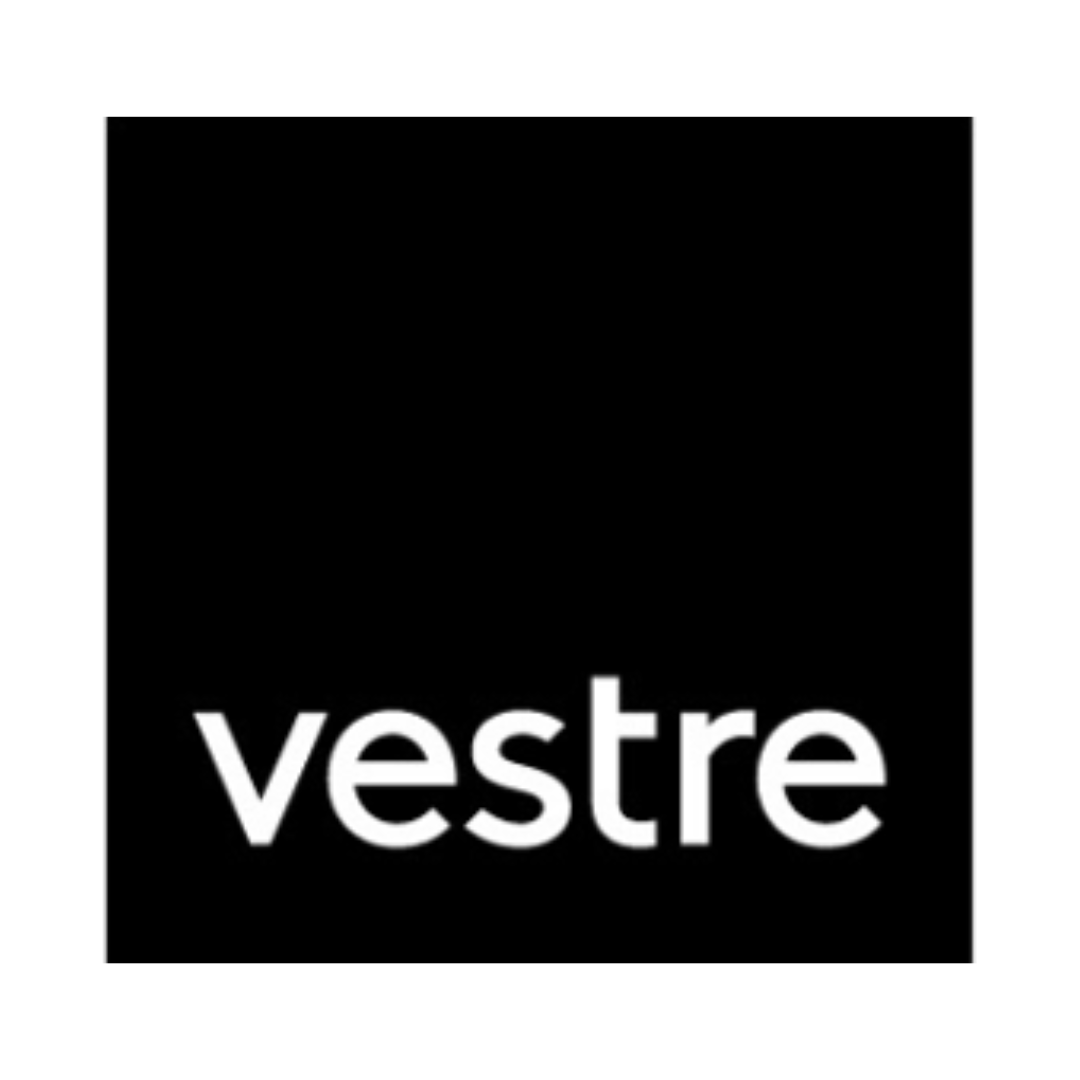Project showcase
The Super Slow Way Linear Park (Pennine Lancashire Linear Park), Blackburn to Pendle – Super Slow Way Consortium with BDP

The 23 mile stretch of the Leeds & Liverpool Canal from Blackburn to Pendle will be regenerated as the Super Slow Way Linear Park, an arts project to increase creative activity in East Lancashire. New crossing points and bridges work toward a ‘twenty minute neighbourhood’ to promote sustainable access and movement.
Who is on the project team?
BDP – Landscape Architecture
BDP – Lighting
BDP – Sustainability / Ecology
Timberplay – Play Consultant
Gardiner and Theobald – Cost Consultants
Vladimir Pejcinovic – Project Manager
Describe the context of this project?
The Super Slow Way Linear Park aims to transform the Leeds & Liverpool Canal corridor in East Lancashire into a green, vibrant and healthy destination where communities can thrive. This vital new, environmentally sustainable, locally driven asset represents an ever-present pulse for its towns and the people who live and work there. To create this new life on the Super Slow Way, the project proposes landscape strategies to imagine an exemplar, world class post-industrial, natural linear park destination to excite visitors and residents with innovative lighting links through intuitive and connected landscapes, that replenish and enhance the precious green and blue spaces of this great waterway.
Working with partners across the 23 miles of the Leeds & Liverpool Canal corridor stretching through East Lancashire from Blackburn in the west, through Hyndburn and Burnley, and ending in Pendle in the east, the Super Slow Way values and develops social spaces in a special place shaped by industry and the families and entrepreneurs that left behind a legacy of great industrial relics, where people can express their own cultural identities and celebrate their own everyday creativity.
The ambition for the project manifests itself in many ways. Focusing on convenient and enjoyable green routes that connect streets and communities to the canal side; the cross movement to and from the canal and its surrounding places; and new crossing points and bridges facilitating interaction between both sides of the canal. Knitting together the fabric of communities in this way will deliver huge rewards.
How are you seeking to foster community?
In our vision, strategies that include creating a green economy; social infrastructure, heritage and destination, emerge from new ‘Life Streams’- Green Life, Social Life, and Park Life.
In a ‘Green Life’, the canal is the organising and connecting element of the linear park. Providing greater integration between the park and canal systems, supports and strengthens the landscape strategy. Green tendrils, that facilitate water management systems and allow people movement to the canal, provide a legible structure to the green open spaces surrounding the canal, having a dramatic impact on biodiversity and the liveability of the towns.
The aspect of ‘Social Life’ focuses on connection. Connection with the Linear Park, and connection between people and communities through visual aspects of wayfinding, communicating identity and information, and shaping a ‘sense of place’. The network of schools, places of worship, and community centres provide the social infrastructure to support local routes and journeys that link the towns, parks and neighborhoods to the canal.
‘Park Life’ embraces the cultural, heritage and visitor aspects of the Linear Park. To amplify the extraordinary industrial heritage by creating a signature tourist destination. To reinforce episodic destinations around landmarks of distinction, and to combine real world experiences with digital information to create an exceptional visitor experience.
With stakeholders, the process then develops projects borne out of the life streams, ranging from the large-scale signature, to low-cost, high impact projects, pop-up events and ‘bottom-up’ interventions that showcase transformation, ‘live’ events, and deliverable incremental change throughout the Linear Park.
What is your sustainability strategy and how are you mitigating carbon use and construction pollution?
The Super Slow Way Linear Park targets the enhancement of the existing canal corridor, through projects which aim to promote habitat creation, the ecological relationship between species, food source and habitats, reducing the environmental impact and the re-purposing of derelict mills.
The canal and adjoining areas must be resilient and focus on water security, extreme heat, flooding and threats to wildlife. Canal and water management improves water quality, the depth of water for activities and enables flora and fauna to thrive. The inclusion of SuDS features, such as retention ponds, adjacent to the canal will be encouraged and act as a meaningful way of providing storage, habitat.
The carbon sequestration process of capturing and storing carbon dioxide will form part of the landscape and is one method of reducing the amount of C02 released. A series of principles are given, which can be applied to enable this process to take place, such as planting a diverse mix of trees and plants which in turn feeds the soil ecosystem and the root fungal networks which store carbon.
The Super Slow Way Linear Park advocates the ‘twenty minute neighbourhood’, a concept that supports the compact neighbourhood, promotes sustainable access and movement, better connectivity and brings communities closer to amenities such as green space, schools, healthcare and transport. Along the Super Slow Way Linear Park, a series of local hubs which already fulfil these ideals are located closely to the canal, with the intention to create more of these as project moves forward.
Describe the social impact of the project: How is this place contributing to the economic, environmental and social wellbeing of its citizens?
The project strives to offer opportunities for people to live, play, learn and build a new greener future for themselves and their families. The aim of the Linear Park is to harness the same pioneering local spirit which underpinned its original invention and unlock the precious green, brown and blue spaces along its course.
The Linear Park has already seen re-purposed and refurbished heritage structures and spaces, such as the Northlight Mill in Pendle, which has been converted into homes and new business ventures. Which in turn promotes people and new businesses to the area. Improving the physical and heritage attributes of the Linear Park will create spill over economic benefits during the short and long term.
Immediate benefits to the quality of the public realm, improved pedestrian connectivity and sustainable modes of transport showcase the canal as a green method of travel. The lighting of key features such as bridges and mills along the canal corridor will create drama and strengthen identity. The lighting seeks to provide a high level of safety whilst preserving character and respecting the contrasting needs of wildlife and the environment.
The Linear Park has the potential to bring together communities and enhance the quality of life of this post-industrial and bio-diverse landscape. New social infrastructure, such as activity centres and community engagement, will strengthen communities and help improve quality of life. Initial improvements, such as cleaning the canal basin and edge, will result in increased footfall, improved social inclusion and a safer environment.
Festival of Pineapples
24-26 February 2026
Pineapples prize giving night
April
Pineapples at Festival of Place
10 June 2026
© The Pineapples - Tweak Ltd. 124 City Road, London, EC1V 2NX. Tel: 020 3326 7238




